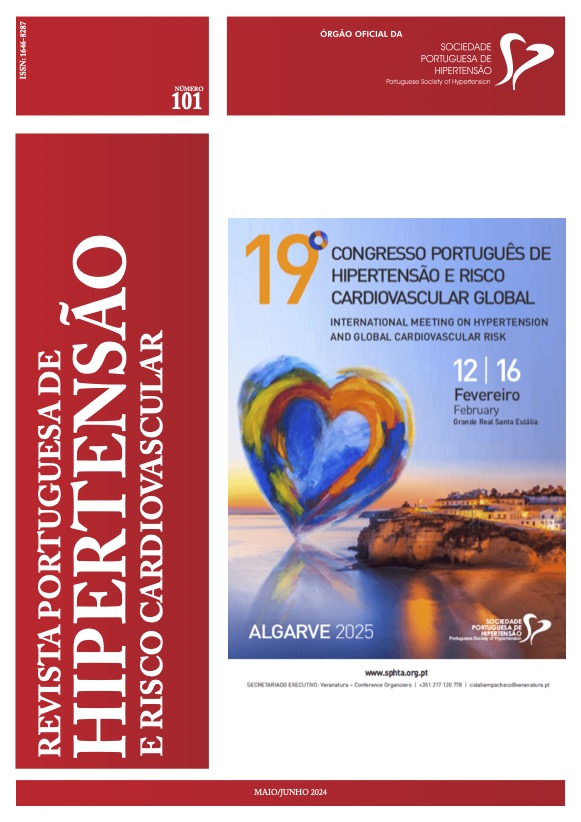PULMONARY EMBOLISM IN A YOUNG ADULT: THE IMPORTANCE OF RISK FACTORS
DOI:
https://doi.org/10.58043/rphrc.130Keywords:
pulmonary thromboembolism, D-dimers, pulmonary computed tomography angiography, risk factors, anticoagulationAbstract
Introduction: Pulmonary thromboembolism (PTE) is a potentially serious pathology, which can be fatal and have complications. As risk factors stand out: immobilization, obesity, smoking, cancer, pregnancy, among others. Clinically it is manifested by pleuritic chest pain, tachycardia and dyspnea. Pulmonary computed tomography angiography (CT angiography) is the method of choice to confirm the diagnosis, but a previous analytical study is often performed, with D-Dimer measurement. The therapy depends on the hemodynamic stability of the patient. Usually every case requires anticoagulation.Clinical Case: Female, 45 years old, autonomous, history of arterial hypertension, dyslipidemia, obesity, right popliteal thrombophlebitis, deep venous thrombosis of the right lower limb, venous insufficiency of the lower limbs, medicated with lisinopril, atorvastatin and combined oral contraceptive (COC). She came to a consultation at the health center due to sudden onset of pleuritic chest pain on the left, with no relieving factors. On observation: eupneic, SpO2 98%, BP 150/95 mmHg, HR 105 bpm, lower limb asymmetry. Calculation of the Wells score 6 points (moderate probability of PTE). She was referred to the emergency department due to suspected PTE. In the emergency, she underwent an analytical study with elevated D-dimers, which led to a pulmonary CT angiography, which revealed “evident signs of PTE on the left in segmental branches, on the right, it partially occludes the pulmonary artery upstream of its bifurcation”, for which reason she was hospitalized for bilateral PTE. During hospitalization, she started anticoagulation with apixaban, having been discharged with this medication for 6 months and recommendation to discontinue COC.
Conclusion: It’s important to suspect the diagnosis of PTE, based on the clinical findings, which can be nonspecific, and on the risk factors, even in young patients, and refer these cases to the emergency. This patient had a history of venous thromboembolism, but did not comply with the recommendations (discontinue COC and control of cardiovascular risk factors). It’s essential to encourage a healthy lifestyle and to recommend the use of elastic containment stockings in these patients. In this clinical case, it is also essential to introduce her to alternative contraceptive methods and support her in her choice.
Downloads
References
Duffett, L., Castellucci, L. A. & Forgie, M. A. Pulmonary embolism: Update on management and controversies. The BMJ vol. 370 Preprint at https://doi. org/10.1136/bmj.m2177 (2020).
Essien, E. O., Rali, P. & Mathai, S. C. Pulmonary Embolism. Medical Clinics of North America vol. 103 549–564 Preprint at https://doi.org/10.1016/j. mcna.2018.12.013 (2019).
Trott, T. & Bowman, J. Diagnosis and Management of Pulmonary Embolism. Emerg Med Clin North Am 40, 565–581 (2022).
Licha, C. R. M., McCurdy, C. M., Maldonado, S. M. & Lee, L. S. Current management of acute pulmonary embolism. Annals of Thoracic and Cardiovascular Surgery vol. 26 65–71 Preprint at https://doi.org/10.5761/atcs. ra.19-00158 (2020).
Toplis, E. & Mortimore, G. The diagnosis and management of pulmonary embolism. (2020).
Downloads
Published
How to Cite
Issue
Section
License
Copyright (c) 2024 Tatiana Bento, Mariana Santos Miranda, Raquel Landeiro

This work is licensed under a Creative Commons Attribution 4.0 International License.




